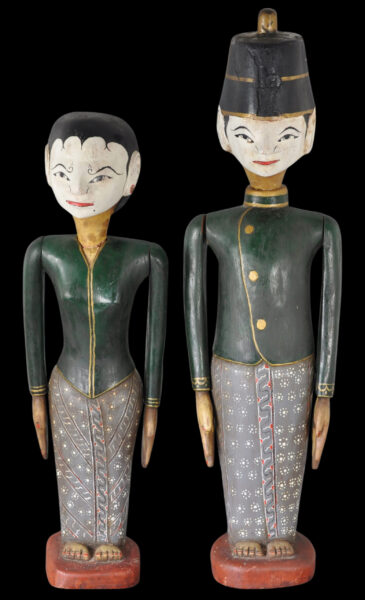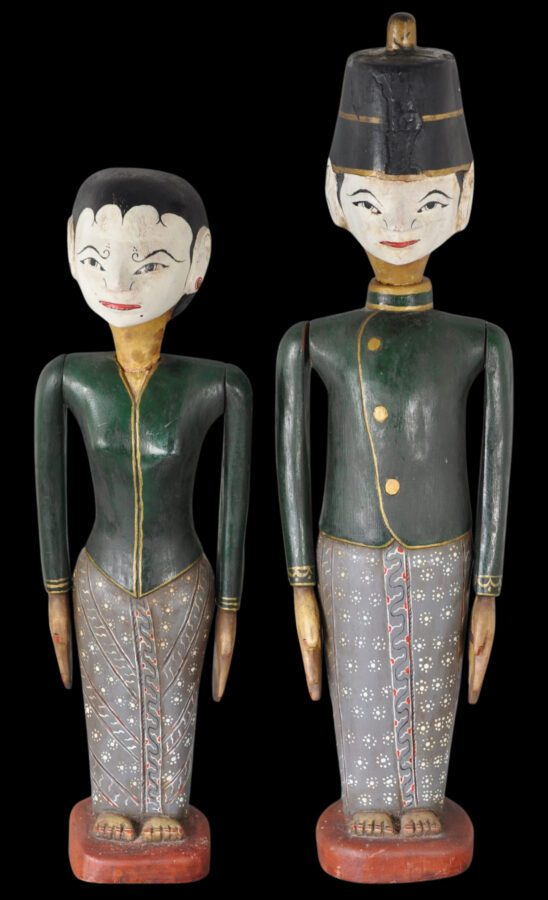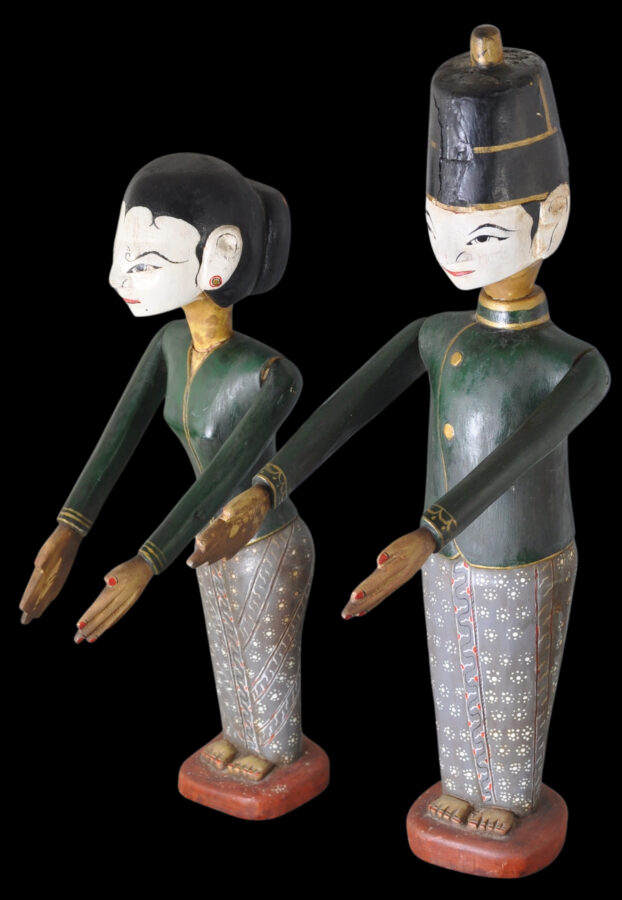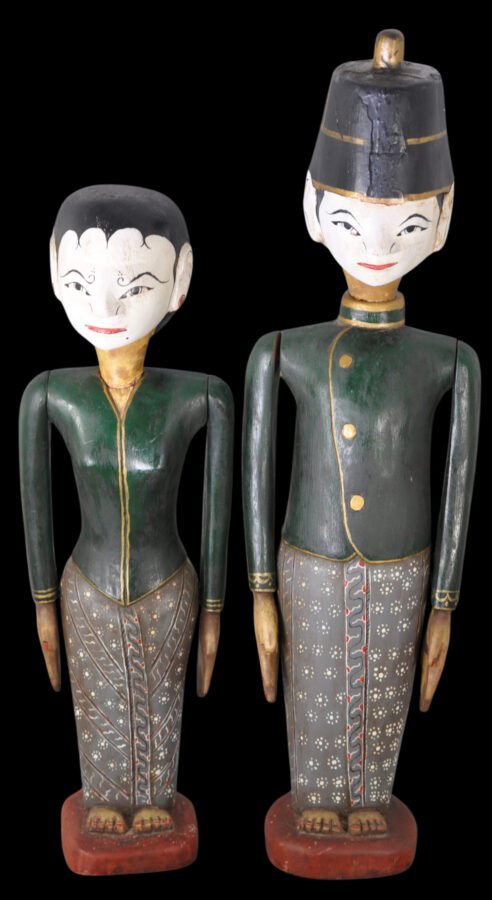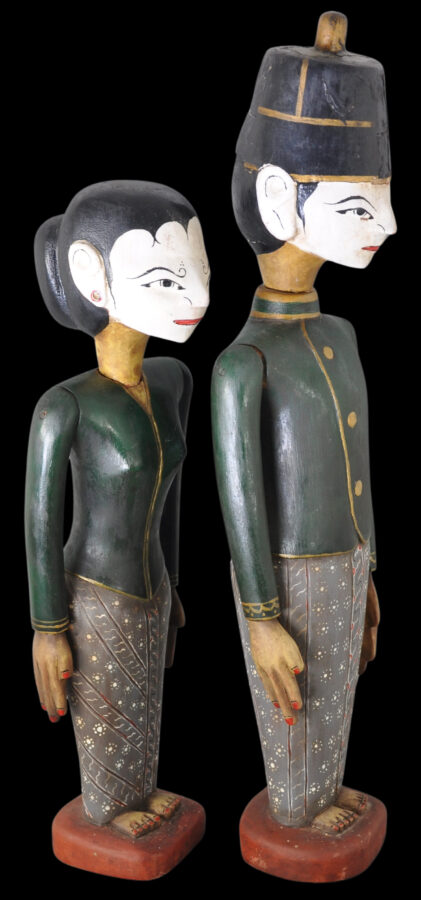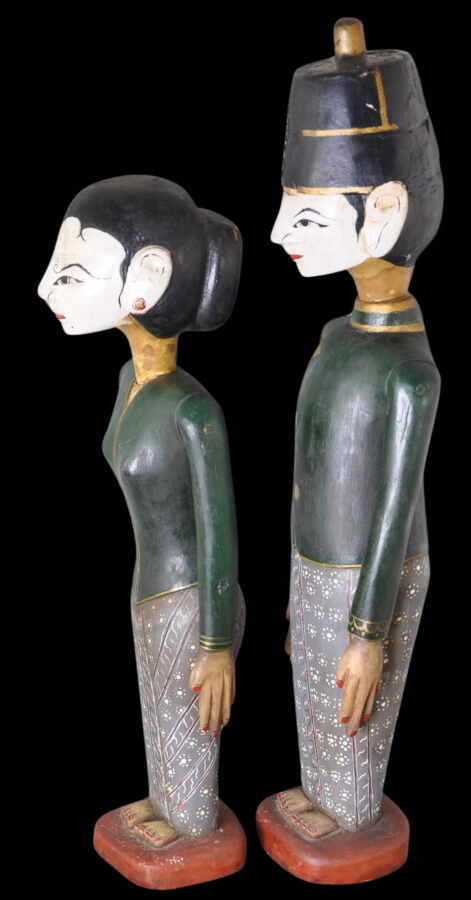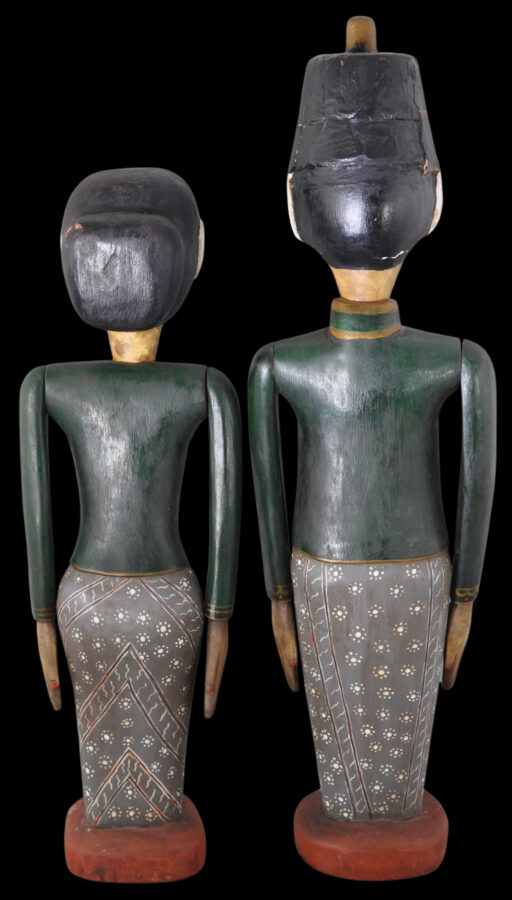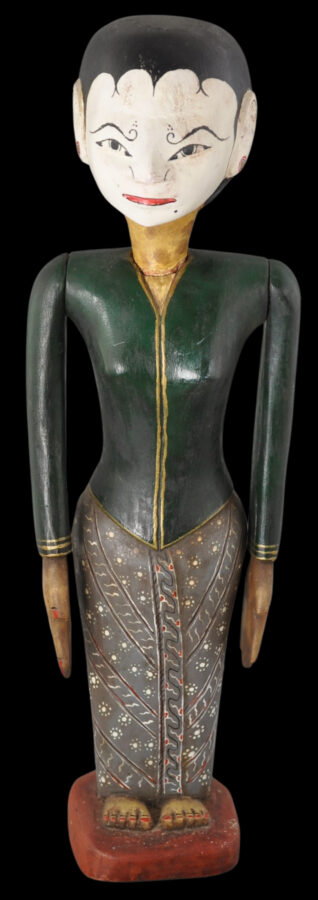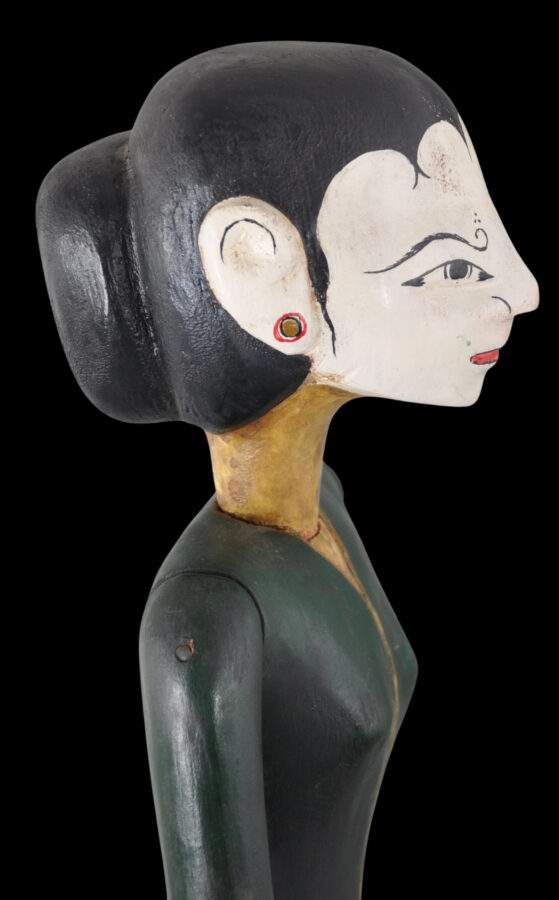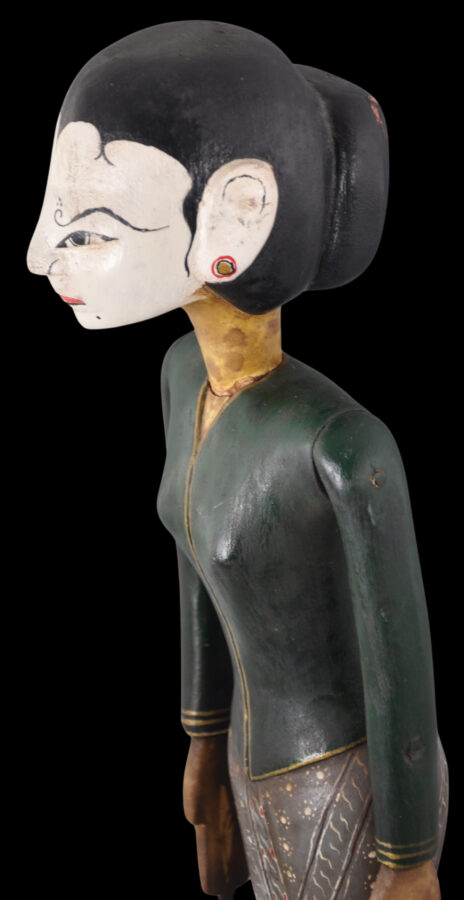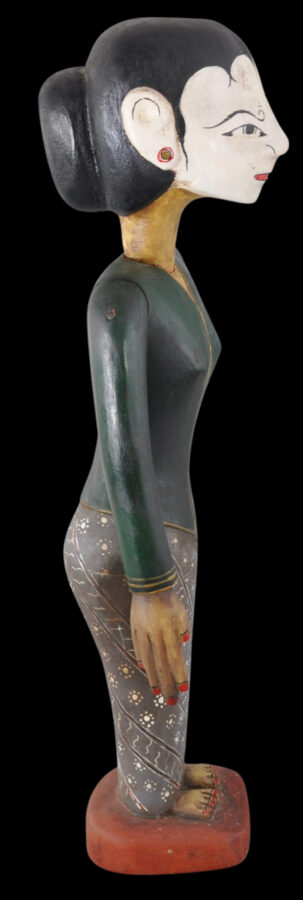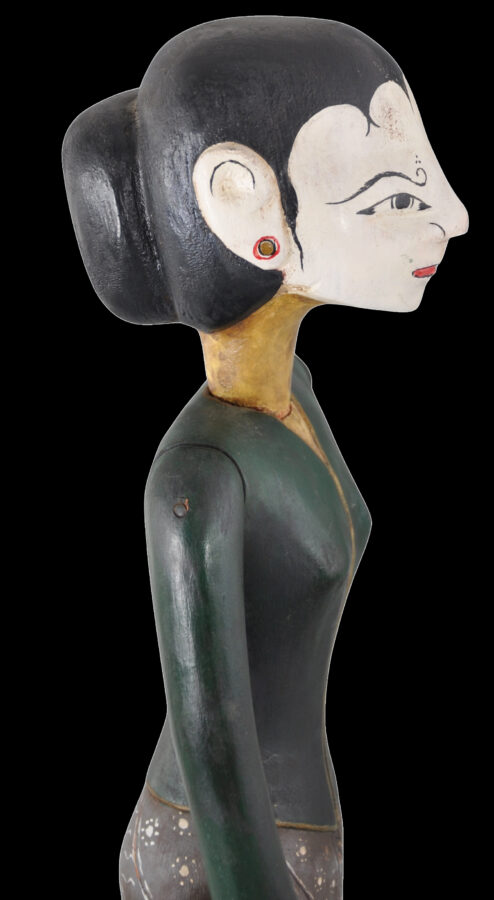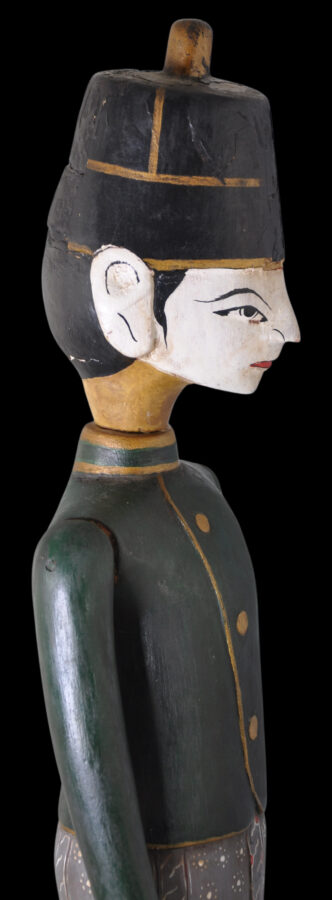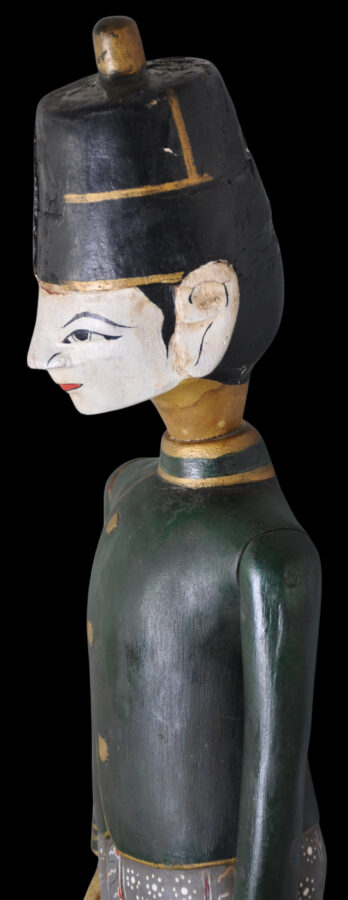This pair of carved wooden puppet figures, seemingly versions of the three-dimensional wayang krucil gilig-type puppets, decorated with pigment and gold highlights is shown in central Javanese court (kraton) dress of the 18th century. The arms are articulated from the shoulders and they are elongated. The faces are angular with the exaggerated figures of wayang figures, the Javanese shadow puppets. One is a female with the ritual make-up known as paesan which extends the hairline in the manner of a central Javanese princess or aristocrat, and the other is a male figure which wears a tall fez-like Javanese peci hat.
The detailing to the costumes, faces and so on is very fine. Both have red-painted toe-nails for example.
Each stands on rounded red platforms.
The arms are attached to the bodies with iron pegs.
Puppet figures such as these are similar to those brought back to the UK by Sir Thomas Stamford Raffles from his time on Java in the early 19th century – he was an official with the British East India Company stationed in Southeast Asia between 1805 and 1824, and served as Lieutenant Governor of Java between 1811 and 1816, during the brief period that the British ruled Java in place of the Dutch. During this time, he amassed large collections of curios from Sumatra and Java, many of which are now in the British Museum, including puppet figures such as these.
Three-dimensional puppet figures from Java are ‘extremely rare’ (Murphy, 2019, p. 81). In respect of the examples brought back by Raffles, it is surmised that they might have been made in the Mangkunegaran court workshops in Surakarta (Solo) in the 1700s.
Green (2023, p. 199) mentions that the use of three-dimensional wayang krucil gilig died out on Java in the late 19th and early 19th centuries, and that the few remaining examples are mostly found in museums.
The figures here differ from the three-dimensional Raffles puppets in that arms are articulated only from the shoulders and not also from the elbows. The proportions, manner of carving, quality of the caving and decoration, and the red platforms on which the figures stand are in keeping with the Raffles’ examples.
Raffles also brought back from Java similarly proportioned carved wooden models of Javanese people in traditional dress. These too are similarly decorated and of similar proportions but the limbs are not articulated.
The examples here are in fine condition. There is some early restoration to the headdress of the male figure but this seems to have significant age and most probably was done on Java. Both stand well, and evenly and are in a stable condition.
References
Barley, N. (ed.), The Golden Sword: Stamford Raffles and the East, British Museum Press, 1999.
Fischer, J., The Folk Art of Java, Oxford University Press, 1994.
Green, A., Southeast Asia: A History in Objects, Thames & Hudson/British Museum, 2023.
Murphy, S., et al, Raffles in Southeast Asia: Revisiting the Scholar and Statesman, Asian Civilisation Museum, 2019.
Mutholi’in, A., et al, Karaton Surakarta: A Look into the Court of Surakarta Hadiningrat, Central Java, Marshall Cavendish Editions, 2006.


